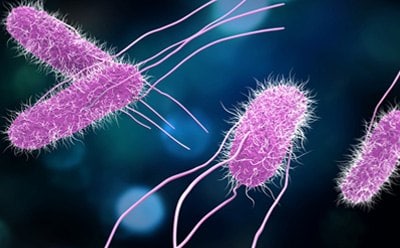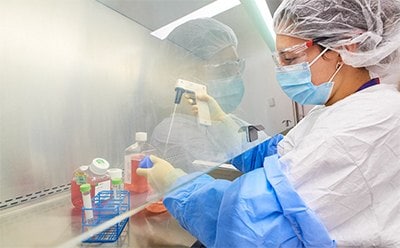Pathogen & Spoilage Testing

Pathogen testing is used to identify pathogenic organisms in manufacturing environments, ingredients or finished products that could harm the consumer. Types of pathogens include specific bacteria strains, viruses, fungi, or parasites that can cause illness in its host. Pathogen testing is continuously performed throughout the production process from raw materials to finished product screening to ensure consumer safety and is subject to strict food safety regulatory guidelines.
Featured Categories
Discover high-quality microbial culture media. Choose from dehydrated or ready-to-use options, meeting industry standards and regulatory requirements.
Pathogen testing is a key component and critical success factor in effective food safety and process control programs. Explore our wide range of pathogen screening products that suit your needs.
Explore our wide range of culture media raw materials and supplements for microbiological purposes. All our raw materials and culture media supplements are safe to handle and ensure optimal performance.
Our collection of testing systems includes alternative & rapid culture media for fast & reliable indicator organisms testing results in a time-efficient method.

BIOSAFETY TESTING SERVICES
Biosafety testing services to investigate mAbs and cell and gene therapy and vaccines materials to ensure that they are free of adventitious agents or unexpected results that can cause catastrophic failures in downstream processing, including: Microbiology and Molecular testing.
Pathogen Detection Methods
- Conventional cultivation-based enrichment and plating methods and rapid plating solution
- Ready-to-use media methods
- ELISA and immunoassay technology
- PCR and molecular detection
- Lateral flow tests
Indicator Organisms
While pathogen testing is looking for specific pathogens, indicator organism testing is looking to verify overall sanitation and safety. Microbial indicators are microorganisms that are not necessarily pathogenic but indicate the potential presence of pathogens. Detecting indicator organisms means that the product has been exposed to conditions that could lead to an increased risk of pathogenic contamination. Pathogens can be difficult to detect. Therefore, indicator organism tests are often used as additional methods to assess the hygienic conditions of a product or manufacturing environment.
Microbial Spoilage Testing
Microbial spoilage testing is the process of determining the presence of spoilage microorganisms that cause product deterioration, effecting the quality and safety. These include Gram-positive and Gram-negative bacteria, as well as yeasts and molds. Spoilage microorganisms are not pathogenic, but can change the physical properties, such as texture, smell, taste, and color, or chemical properties of a product and making it unsuitable for consumption. Spoilage can occur at any stage along the food chain and needs to be part of the microbiological quality control. The testing requirements vary from industry to industry, depending on different spoilage parameters.
Visit our document search for data sheets, certificates and technical documentation.
Related Articles
- An article concerning selective growth media for differentiation and detection of Escherichia coli and other coliforms.
- Food contaminated by microorganisms (bacteria and yeasts), viruses, and protozoa can cause severe disease.
- Fast molecular screening of beverage, water, wastewater and food for microorganisms
- Salmonella pass through the entire food chain from animal feed, primary production, and into households or food-service establishments.
- Detection of Listeria monocytogenes in food and environmental samples according to ISO 11290-1, FDA-BAM and USDA-FSIS
- See All (43)
Related Protocols
- Comparison of MC-Media Pad® with different convenience solution products for indicator organism testing
- Yeast culture techniques: Model systems for eukaryotic studies with liquid media or agar plate growth.
- The International Organization for Standardization (ISO) published the revised EN ISO 21528-1 and EN ISO 21528-2 standards in 2017.
- EN ISO 6579-1 standard specifies detection of Salmonella spp. in human consumption, animal feed, and environmental samples.
- Food-borne pathogens Salmonella is commonly evaluated in manufacturing of peanut butter and other food products.
- See All (11)
Find More Articles and Protocols
How Can We Help
In case of any questions, please submit a customer support request
or talk to our customer service team:
Email [email protected]
or call +1 (800) 244-1173
Additional Support
- Calculators & Apps
Web Toolbox - science research tools and resources for analytical chemistry, life science, chemical synthesis and materials science.
- Customer Support Request
Customer support including help with orders, products, accounts, and website technical issues.
- FAQ
Explore our Frequently Asked Questions for answers to commonly asked questions about our products and services.
To continue reading please sign in or create an account.
Don't Have An Account?


















